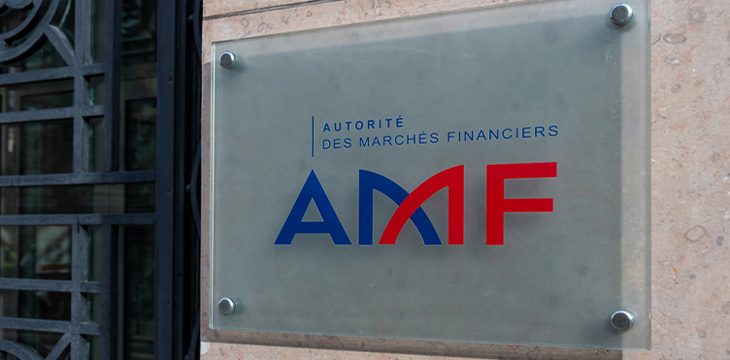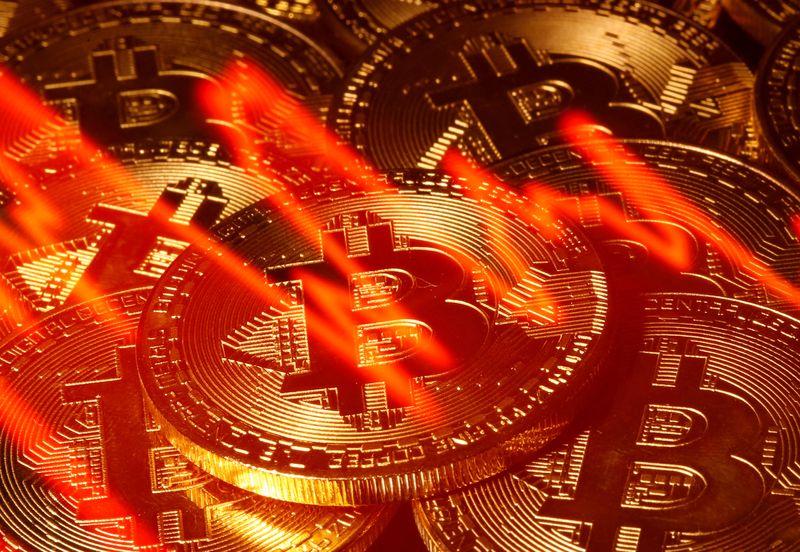DeFi
Decentralization a spectrum, regulation a necessity: Responses to France’s DeFi discussion paper

The Autorité des marchés financiers (AMF), the securities commission of France, published a summary of responses received to a June 2023 discussion paper on decentralized finance (DeFi), with the majority of respondents favoring the idea of decentralization existing on a spectrum and showing support for developing a regulatory framework for DeFi, including increased identity disclosures.
The AMF received 34 responses from various players in the DeFi ecosystem (project initiators, foundations, and blockchain organizations), as well as centralized players from the digital asset sector and from traditional finance, such as service providers, consultancy, and audit firms.
The discussion paper asked respondents to consider the following issues: a definition of and a regulatory approach to DeFi; the nature (permissioned or permissionless) of blockchain protocols; issues linked to smart contracts; and governance-related matters.
“Overall, the responses raised the importance of developing a clear legal framework for DeFi and in this regard elaborated further upon several key concepts, such as the notion of ‘decentralization’ and references to ‘permissioned or permissionless blockchains,’” said the AMF.
The paper began by outlining the fundamental issue of what actually qualifies as ‘decentralized’ before getting into the equally thorny issue of regulation.
Decentralization on a spectrum
The AMF noted that respondents seemed to agree on a couple of key points related to the definition of DeFi: first, that defining the concept would be essential in order to set the boundaries of a regulatory framework, and second, that levels of decentralization can vary from one project to another and should thus be considered along a sliding scale, or ‘spectrum,’ of decentralization.
This certainly seems a logical place to start: eliminating the idea that all DeFi is created equal and equally decentralized or the black-and-white interpretation that an entity is either decentralized or isn’t.
In fact, some have argued that the entire notion of “decentralization” is a myth, and there are, in fact, only different levels of centralization—a semantic point that a few respondents to the AMF discussion paper clearly also made. In pointing out the consensus that decentralization is a spectrum, the regulator noted that the same is true “conversely, of centralization.”
In addition, the AMF reported that some responses highlighted “the potential for a given project to evolve over time, where it may initially appear to be relatively centralised, but could evolve towards greater levels of decentralisation, particularly as it is further adopted by users, when its volume of activity increases, or as its governance becomes more open.”
This might well be the case for some DeFi projects, but again, there are degrees, and the notion of progressing to decentralization has been overplayed by some entities, such as the Ethereum blockchain and its founders.
In order to work towards a more objective measurement of where a firm/project lies on this centralization/decentralization spectrum, some respondents referred to the level of automation of projects, i.e., the more these are subject to automated processes, the more decentralized they might be.
However, the AMF suggested that “the notion of automation would likely not be sufficient in itself to judge of the level of decentralisation, as other factors such as the layout, and distribution architecture of the network on which the project operates could also be taken into account.”
In general, the idea emerged of producing some kind of ‘test of decentralization,’ which would take into account both technical aspects (such as level of automation, use of open-source code, permissioned or permissionless blockchain) and governance aspects (such as absence of control of administrator keys over a protocol or smart contract, absence of a central decision-making entity).
“Nonetheless, it appears difficult to reach a complete consensus among the responses obtained, with some respondents considering that some of the criteria mentioned should not necessarily be retained, while others consider them as central to the definition of DeFi,” said the AMF.
Despite the difficulties in reaching a complete consensus, there was agreement that defining DeFi is an important task worth attempting. With this in mind, the AMF extracted certain criteria from the responses that could, at a minimum, be used to assess an entity’s level of decentralization:
- From a technical standpoint, the level of automation and autonomy of the protocol, the absence of administrator rights or keys (or rights or privileges of a similar nature), and an assessment of the level of transparency of the code used.
- From an operational point of view, the analysis could focus on the characteristics of the activity, identifying whether it is provided in an ‘open’ manner (e.g., via a permissionless blockchain protocol that is accessible to the public) and that no custodial activity is provided via the protocol.
- From a governance point of view, criteria could be retained in order to identify situations of ‘de facto’ or ‘de jure’ control over the protocol by developers or users, considering for instance the levels of distribution in governance tokens held, as well as the effective level of participation of holders in the decision-making process.
In terms of the latter point, the AMF clarified that “it would seem clear however that, in order for an activity to be identified as decentralised, a protocol cannot in any case have a central authority (i.e. a legal entity, individual, or a group of individuals) responsible for the governance of the activity.”
After outlining responses related to what decentralization actually is, the regulator put forward the key findings related to how DeFi should be regulated.
Reflections on regulation
According to the AMF, respondents were in favor of developing a regulatory framework for DeFi, most stressing the importance of clearly defining this to provide players with as much certainty as possible.
“A consensus seemed to emerge in responses on the subject of a regulatory approach that would have the same objectives as the regulation applicable to traditional financial markets, i.e. thereby proposing an approach under the ‘same activity, same risk, same regulatory outcome’ principle,” said the report.
Fortunately, this is essentially the approach to DeFi regulation also proposed by the Bank for International Settlements (BIS), the U.K. Bank of England (BOE), and the EU Markets in Crypto Assets (MiCA) regulation, to which France is subject (or will be when it fully comes into force by the end of the year).
For this reason, the AMF suggested that “the principle of ‘same activities, same risks, same regulatory outcomes’, widely supported in the responses received from respondents, should be applied unambiguously, while taking into account the emerging features brought about by these new activities.”
Some industry players did point out that this approach would be more appropriate where the activities and risks of DeFi are similar to those of centralized finance (CeFi), but as we’ve already seen, the line between DeFi and CeFi is hazy at best, and non-existent at worst, so perhaps this point is moot.
To address specific regulatory challenges posed by DeFi, respondents also suggested that imposing certain obligations would be appropriate, such as disclosing the risks incurred and a mechanism for certifying the code and auditing smart contracts. Respondents also suggested imposing standards on protocol governance, the transparency of the code, cybersecurity, and in relation to anti-money laundering and counter-terrorist financing (AML/CFT) measures.
Permission and governance
The discussion paper also touched on several other topics related to DeFi, including an analysis of permissioned and permissionless blockchain protocols.
Permissioned blockchains restrict access to certain users who need approval to participate, while permissionless blockchains allow anyone to join and participate without approval. The main difference is that permissioned blockchains control who can access and contribute, while permissionless blockchains are open to everyone.
“A number of respondents indicated that DeFi could only be considered in the context of permissionless blockchains,” said the AMF.
This seems a logical suggestion, as any permissioned blockchain raises the question of who the permissioned people are, who approves of joining, and if they qualify as a centralized group/entity.
Once the status of a DeFi project or entity is established, the next major issue becomes governance.
A key discussion point was the ‘pseudonymity‘ of the blockchain, which can contribute to a less transparent governance of DeFi protocols, of which the AMF noted that “responses affirmed the inherent nature of pseudonymity in public and permissionless blockchains (due to their freely accessible nature).”
It went on to report how “the majority of respondents indicated that the issue of participant identification would however be fundamental to the establishment of a regulatory framework, in particular to enable the application of AML/CFT and Know Your Client rules, which are fundamental aspects that serve to maintain the integrity of the financial system.”
The admission from DeFi “industry players”—a demographic not always known for its embracing of transparency and self-identification—that some form of mandated identification would be a necessary part of any appropriate regulation makes for pleasant reading for those in the industry that favors operating openly, in compliance and within the law.
To achieve this, the AMF’s discussion paper suggested introducing a centralized digital identity that would enable the direct identification of participants at the blockchain level.
This solution would add further transparency to the public blockchain, but raises the question of feasibility, specifically which authority (or authorities) would be responsible for implementing it, given that public blockchains can operate in a global and cross-border manner.
Debates and planned follow-up
The AMF concluded by noting its appreciation to those who participated and setting out its next steps.
“The AMF wishes to thank the respondents to its paper, and intends to continue the discussion with all stakeholders involved, with a view to supporting the emergence of a regulatory framework conducive to the balanced development of decentralised finance,” said the regulator.
“Through this form of dialogue with the ecosystem, the responses brought to the paper have helped to further develop and refine the understanding of decentralised finance, in the context of discussions around the emergence of a possible regulatory framework.”
The AMF said it would continue to support the development of a coordinated regulatory approach to DeFi, particularly given the cross-border nature of its activities, to enable “a level playing field between jurisdictions.”
In this regard, the French finance watchdog was keen to draw attention to European and international initiatives in this area.
“At the European level, following the entry into force of the MiCA regulation, the European Commission will produce a report on assessing the development of decentralised finance and of the appropriate regulatory treatment of decentralised crypto-asset systems, as well as an assessment of the necessity and feasibility of regulating decentralised finance,” said the AMF.
It also pointed to the work being done at the international level by the International Organization of Securities Commissions (IOSCO)—of which the AMF is an active member—the Financial Stability Board (FSB), the Bank for International Settlements (BIS), and the Organization for Economic Cooperation and Development (OECD), all of which have published reports providing considerations and recommendations on DeFi.
The AMF rounded off by reiterating that “as indicated in the discussion paper, the next few years will prove to be crucial for DeFi, with a dual challenge: building secure and transparent mechanisms that enable the ecosystem to thrive, while ensuring better protection for investors.”
Watch: Blockchain regulation with Marcin Zarakowski
 width=”560″ height=”315″ frameborder=”0″ allowfullscreen=”allowfullscreen”>
width=”560″ height=”315″ frameborder=”0″ allowfullscreen=”allowfullscreen”>
New to blockchain? Check out CoinGeek’s Blockchain for Beginners section, the ultimate resource guide to learn more about blockchain technology.
DeFi
Pump.Fun is revolutionizing the Ethereum blockchain in terms of daily revenue

The memecoin launchpad saw the largest daily revenue in all of DeFi over the past 24 hours.
Memecoin launchpad Pump.Fun has recorded the highest gross revenue in all of decentralized finance (DeFi) in the last 24 hours, surpassing even Ethereum.
The platform has raised $867,429 in the past 24 hours, compared to $844,276 for Ethereum, according to DeFiLlama. Solana-based Telegram trading bot Trojan was the third-highest revenue generator of the day, as memecoin infrastructure continues to dominate in DeFi.
Pump.Fun generates $315 million in annualized revenue according to DeFiLlama, and has averaged $906,160 per day over the past week.
Income Ranking – Source: DeFiLlama
The memecoin frenzy of the past few months is behind Pump.fun’s dominance. Solana-based memecoins have been the main drug of choice for on-chain degenerates.
The app allows non-technical users to launch their own tokens in minutes. Users can spend as little as $2 to launch their token and are not required to provide liquidity up front. Pump.Fun allows new tokens to trade along a bonding curve until they reach a set market cap of around $75,000, after which the bonding curve will then be burned on Raydium to create a safe liquidity pool.
Pump.Fun generates revenue through accrued fees. The platform charges a 1% fee on transactions that take place on the platform. Once a token is bonded and burned on Raydium, Pump.fun is no longer able to charge the 1% fee.
Ethereum is the blockchain of the second-largest cryptocurrency, Ether, with a market cap of $395 billion. It powers hundreds of applications and thousands of digital assets, and backs over $60 billion in value in smart contracts.
Ethereum generates revenue when users pay fees, called gas and denominated in ETH, to execute transactions and smart contracts.
DeFi
DeFi technologies will improve trading desk with zero-knowledge proofs

DeFi Technologies, a Canadian company financial technology companyis set to enhance its trading infrastructure through a new partnership with Zero Computing, according to a July 30 statement shared with CryptoSlate.
The collaboration aims to integrate zero-knowledge proof tools to boost operations on the Solana And Ethereum blockchains by optimizing its ability to identify and execute arbitrage opportunities.
Additionally, it will improve the performance of its DeFi Alpha trading desk by enhancing its use of ZK-enabled maximum extractable value (MEV Strategies).
Zero knowledge Proof of concept (ZKP) technology provides an additional layer of encryption to ensure transaction confidentiality and has recently been widely adopted in cryptographic applications.
Optimization of trading strategies
DeFi Technologies plans to use these tools to refine DeFi Alpha’s ability to spot low-risk arbitrage opportunities. The trading desk has already generated nearly $100 million in revenue this year, and this new partnership is expected to further enhance its algorithmic strategies and market analysis capabilities.
Zero Computing technology will integrate ZKP’s advanced features into DeFi Alpha’s infrastructure. This upgrade will streamline trading processes, improve transaction privacy, and increase operational efficiency.
According to DeFi Technologies, these improvements will increase the security and sophistication of DeFi Alpha’s trading strategies.
The collaboration will also advance commercial approaches for ZK-enabled MEVs, a new concept in Motor vehicles which focuses on maximizing value through transaction fees and arbitrage opportunities within block production.
Additionally, DeFi Technologies plans to leverage Zero Computing technology to develop new financial products, such as zero-knowledge index exchange-traded products (ETPs).
Olivier Roussy Newton, CEO of DeFi Technologies, said:
“By integrating their cutting-edge zero-knowledge technology, we not only improve the efficiency and privacy of our transactions, but we also pave the way for innovative trading strategies.”
Extending Verifiable Computing to Solana
According to the release, Zero Computing has created a versatile, chain-agnostic platform for generating zero-knowledge proofs. The platform currently supports Ethereum and Solana, and the company plans to expand compatibility with other blockchains in the future.
The company added that it is at the forefront of introducing verifiable computation to the Solana blockchain, enabling complex computations to be executed off-chain with on-chain verification. This development represents a significant step in the expansion of ZKPs across various blockchain ecosystems.
Mentioned in this article
Latest Alpha Market Report
DeFi
Elastos’ BeL2 Secures Starknet Grant to Advance Native Bitcoin Lending and DeFi Solutions

Singapore, Asia, July 29, 2024, Chainwire
- Elastos BeL2 to Partner with StarkWare to Integrate Starknet’s ZKPs and Cairo Programming Language with BeL2 for Native DeFi Applications
- Starknet integration allows BeL2 to provide smart contracts and dapps without moving Bitcoin assets off the mainnet
- Starknet Exchange Validates the Strength of BeL2’s Innovation and Leadership in the Native Bitcoin Ecosystem
Elastos BeL2 (Bitcoin Elastos Layer2) has secured a $25,000 grant from Starknet, a technology leader in the field of zero-knowledge proofs (ZKPs). This significant approval highlights the Elastos BeL2 infrastructure and its critical role in advancing Bitcoin-native DeFi, particularly Bitcoin-native lending. By integrating Starknet’s ZKPs and the Cairo programming language, Elastos’ BeL2 will enhance its ability to deliver smart contracts and decentralized applications (dapps) without moving Bitcoin (BTC) assets off the mainnet. This strategic partnership with Starknet demonstrates the growing acceptance and maturity of the BeL2 infrastructure, reinforcing Elastos’ commitment to market leadership in the evolving Bitcoin DeFi market.
Starknet, developed by StarkWare, is known for its advancements in ZKP technology, which improves the privacy and security of blockchain transactions. ZKPs allow one party to prove to another that a statement is true without revealing any information beyond the validity of the statement itself. This technology is fundamental to the evolution of blockchain networks, which will improve BeL2’s ability to integrate complex smart contracts while preserving the integrity and security of Bitcoin.
“We are thrilled to receive this grant from Starknet and announce our partnership to build tighter integrations with its ZKP technology and the Cairo programming language,” said Sasha Mitchell, Head of Bitcoin Layer 2 at Elastos. “This is a major milestone for BeL2 and a true recognition of the maturity and capabilities of our core technology. This support will allow us to further develop our innovation in native Bitcoin lending as we look to capitalize on the growing acceptance of Bitcoin as a viable alternative financial system.”
A closer integration with Cairo will allow BeL2 to leverage this powerful programming language to enhance Bitcoin’s capabilities and deliver secure, efficient, and scalable decentralized finance (DeFi) applications. Specifically, the relationship with Cairo reinforces BeL2’s core technical innovations, including:
- ZKPs ensure secure and private verification of transactions
- Decentralized Arbitrage Using Collateralized Nodes to Supervise and Enforce Fairness in Native Bitcoin DeFi
- BTC Oracle (NYSE:) facilitates cross-chain interactions where information, not assets, is exchanged while Bitcoin remains on the main infrastructure
BeL2’s vision goes beyond technical innovation and aims to innovate by creating a new financial system. The goal is to build a Bitcoin-backed Bretton Woods system, address global debt crises, and strengthen Bitcoin’s role as a global hard currency. This new system will be anchored in the integrity and security of Bitcoin, providing a stable foundation for decentralized financial applications.
As integration with Starknet and the Cairo programming language continues, BeL2 will deliver further advancements in smart contract capabilities, decentralized arbitration, and innovative financial products. At Token 2049, BeL2 will showcase further innovations in its core technologies, including arbitrators, that will underscore Elastos’ vision for a fairer decentralized financial system rooted in Bitcoin.
About Elastos
Elastos is a public blockchain project that integrates blockchain technology with a suite of redesigned platform components to produce a modern Internet infrastructure that provides intrinsic privacy and ownership protection for digital assets. The mission is to create open source services that are accessible to the world, so developers can create an Internet where individuals own and control their data.
The Elastos SmartWeb platform enables organizations to recalibrate how the Internet operates to better control their own data.
https://www.linkedin.com/company/elastosinfo/
ContactPublic Relations ManagerRoger DarashahElastosroger.darashah@elastoselavation.org
DeFi
Compound Agrees to Distribute 30% of Reserves to COMP Shareholders to End Alleged Attack on Its Governance

Compound will introduce the staking program in exchange for Humpy, a notorious whale accused of launching a governance attack on the protocol, negating a recently adopted governance proposal.
Compound is launching a new staking program for COMP holders as a compromise with Humpy, a notorious DeFi whale accused of launching a governance attack against the veteran DeFi protocol.
On July 29, Bryan Colligan, head of business development at Compound, published a governance proposal outlining plans for a new compound participation product that would pay 30% of the project’s current and future reserves to COMP participants.
Colligan noted that the program was requested by Humpy in exchange for his agreement Proposition 289 — which sought to invest 499,000 COMP worth approximately $24 million into a DeFi vault controlled by Humpy, and which appears to have been forced by Humpy and his associates over the weekend.
“We propose the following staking product that meets Humpy’s stated interests as a recent new delegate and holder of COMP in exchange for the repeal of Proposition 289 due to the governance risks it poses to the protocol,” Colligan said. “The Compound Growth Program…will execute the above commitments, given the immediate repeal of Proposition 289.”
Colligan added that the proposal would expire at 11:59 p.m. EST on July 29. Had Humpy not rescinded Proposition 289, Compound would move forward with it. Proposition 290 — block Humpy using the Compound team’s multi-sig to deploy a new governor contract removing the delegate’s governance power behind Proposition 289.
Hunchback tweeted that Proposition 289 had been repealed a few hours ago. “Glad to have brought Compound Finance back into the spotlight,” they said. added. “StakedComp… finally becomes a yield-generating asset!
Markets reacted favorably to the resolution, with the price of COMP increasing by 6.2% over the past 24 hours, according to CoinGecko.
Attack on governance
Proposition 289 proposed investing 499,000 COMP from the Compound treasury into goldCOMP, a yield-generating vault of the Humpy-linked Golden Boys team.
The proposal passed with nearly 52 percent of the vote on July 28, despite two previous iterations of the proposal being defeated by strong opposition. Can And JulyThe proposals notably asked for only 92,000 COMP, with security researchers warning that any deposit of tokens into the goldCOMP vault would cede their governance power.
In May, Michael Lewellen of Web3 security firm OpenZeppelin, note The first proposal was submitted by a new governance delegate who was suddenly awarded 228,000 COMP by five wallets that got their tokens from the Bybit exchange. Combined with his own tokens, the delegate got 325,333 COMP, which is over 81% of the 400,000 tokens required for a governance proposal to reach quorum.
“We have been alerting the community to the risk that these delegates could support a potential attack on governance,” Lewellen said. “The timing of the new proposal and these recent delegations are suspect.”
Read more: Compound community accuses famous whale of attacking engineering governance
-

 News10 months ago
News10 months agoVolta Finance Limited – Director/PDMR Shareholding
-

 News10 months ago
News10 months agoModiv Industrial to release Q2 2024 financial results on August 6
-

 News10 months ago
News10 months agoApple to report third-quarter earnings as Wall Street eyes China sales
-

 News10 months ago
News10 months agoNumber of Americans filing for unemployment benefits hits highest level in a year
-

 News1 year ago
News1 year agoInventiva reports 2024 First Quarter Financial Information¹ and provides a corporate update
-

 News1 year ago
News1 year agoLeeds hospitals trust says finances are “critical” amid £110m deficit
-

 DeFi1 year ago
DeFi1 year ago🏴☠️ Pump.Fun operated by Insider Exploit
-

 Tech1 year ago
Tech1 year agoBitcoin’s Correlation With Tech Stocks Is At Its Highest Since August 2023: Bloomberg ⋆ ZyCrypto
-

 Tech1 year ago
Tech1 year agoEverything you need to know
-

 Markets12 months ago
Markets12 months ago20 Top Crypto Trading Platforms to Know
-

 News10 months ago
News10 months agoStocks wobble as Fed delivers and Meta bounces
-

 Markets1 year ago
Markets1 year agoWhale Investments in Bitcoin Hit $100 Billion in 2024, Fueling Insane Investor Optimism ⋆ ZyCrypto













